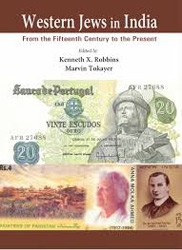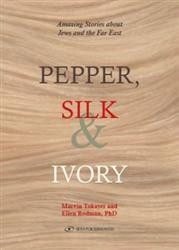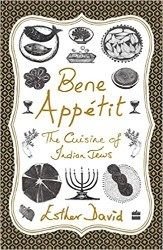The volume is intended as a corrective to the dismissal, common in the 1950s, of the newly independent country of India as unable to produce original and important works of art that could stand alongside Western ones. It is also meant to demonstrate that India was and had been made up of peoples from other places — specifically Jews — who lived alongside the native population.
The essays explore various questions of identity in genres of art that inevitably touch upon the politics of the art world. During British colonial rule, individuals such as the Jewish art historian Stella Kramrisch brought Western art to the attention of Indians and vice versa. The essay on the Baroda Museum traces the influence of the prominent editor of The Magazine of Art, Marion Henry Spielmann, as well as that of the German refugee Ernst Cohn-Wiener, on the museum’s collection; their tastes reflected the European point of view even as they were strongly supported by the local maharaja. Refugees from Nazi Germany and other countries it controlled who came to India played a significant part in the cultural life both before and after Indian independence.
Robbins emphasizes how much the nationalistic forces leading to the end of the colonial period were active in the development of a “national” art. It is important to note that the Jews who are discussed for their roles in Indian art were mostly Jews with only the most tenuous connections to their Jewish communities. The authors imply that it was not the Indian mystical or spiritual heritage that attracted them, but rather the fact that they simply did not identify with the Jewish community. Examples include the successful and revered artist Fryzee Rachamin who converted to Islam at a young age but nevertheless maintained a connection to the community in which he was raised; artist/photographer Man Ray (born Emmanuel Radnitzky) whose relationship with the dashing and westernized Maharajah of Indore is analyzed in terms of the “re-invention of self”; and Magda Nahman, the Russian-born artist married to the political activist M.P.T Acharya.
Moving to a later period in the twentieth century, Robbins highlights Carmel Berkson, a Jewish American artist and scholar whose interest in the sculpture of India and the Baghdadi and Bene Israel communities brought them to the attention of Israel and the west. Robbins discusses Berkson’s interest in “rasa,” the Indian aesthetic concept that “categoriz[es] art in terms of its provocation of particular emotional states of mind.” Berkson also rejects the Jewish commandment against the worship of images, which she considered an “‘innate human response.’”
Essays also deal with contemporary artists as well as Jewish art patrons and critics. Each includes documentation in bibliography.
Jews and the Indian National Art Project is deserving of popular as well as scholarly attention that focusing on Jewish participation in the dynamic art world of India in the recent century.
Related Content:
- Indian Jewish Experiences Reading List
- Elana Benjamin: Four Generations of Lunch, from India to Australia
- Tehila Lieberman: When a Story Is Born First




